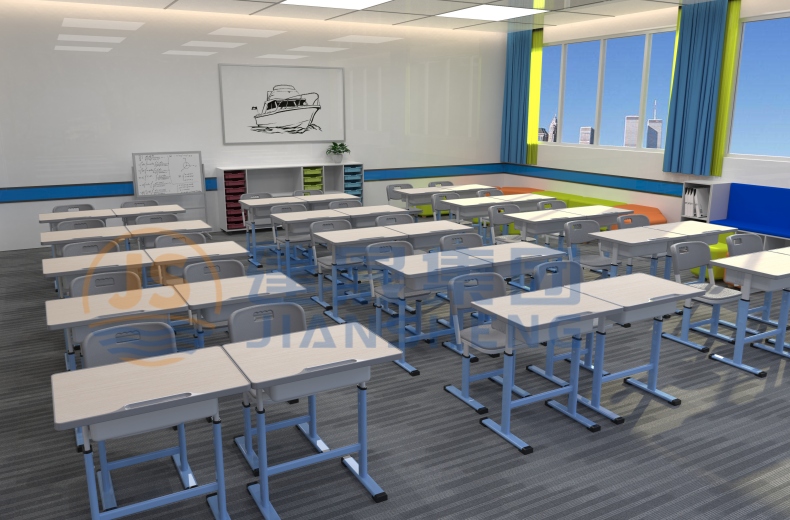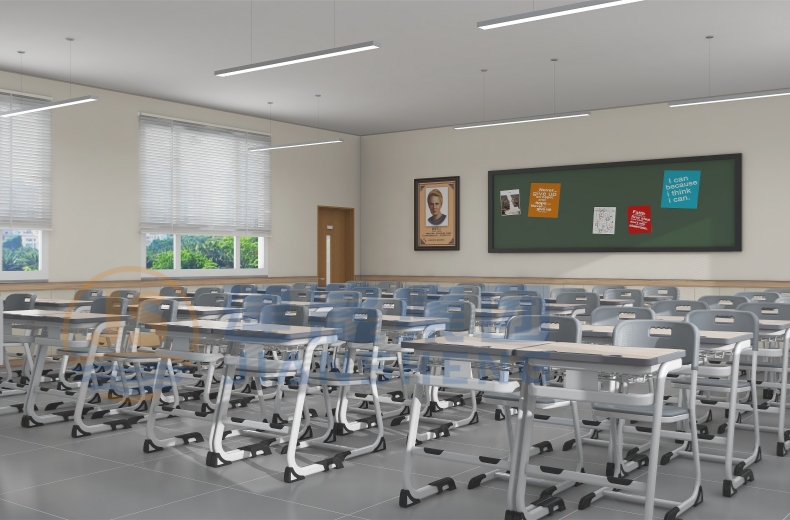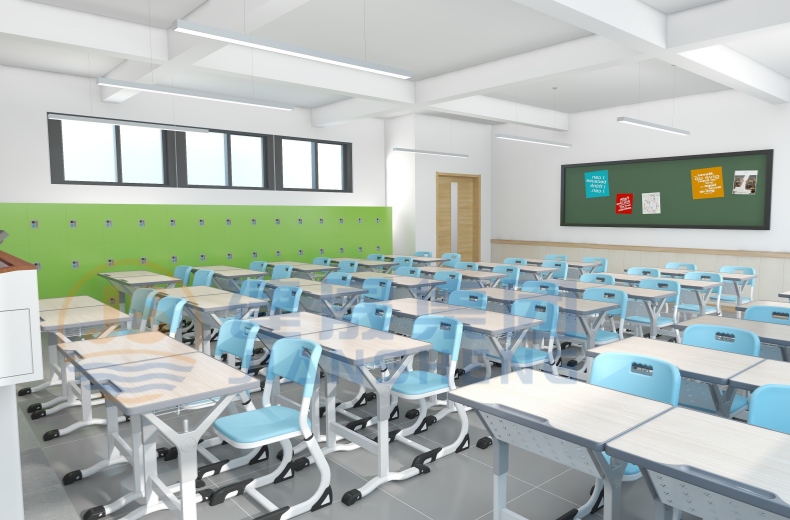- Home
- About Us
- Service
-
Solution
- Kindergarten Classroom
- Primary School Classroom
- Secondary School Classroom
- High School Classroom
- College Classroom
- Training Classroom
- Music Classroom
- Art Classroom
- Lecture Classroom
- Computer Classroom
- Library
- Principal Office
- Administration Office
- Meeting Room
- Reception Room
- Public Area
- Teachers' Office
-
Products
- Case Study
- News
- VR Designs
- Video Center
- JS Lab
- Contact Us

Ensuring School Furniture Adheres to Safety Standards: A Comprehensive Guide
2024-04-17 22:00
Ensuring School Furniture Adheres to Safety Standards: A Comprehensive Guide
The safety and comfort of students in educational environments are paramount concerns for educators and administrators. School furniture plays a crucial role in providing a conducive learning environment while minimizing the risk of accidents or injuries. In this guide, we'll explore key steps to ensure that school furniture meets relevant safety standards, promoting a safe and supportive learning environment for all students.

1. Understand Safety Regulations:
- Familiarize yourself with safety regulations and standards governing school furniture. These may include guidelines set by government agencies, educational authorities, or industry organizations.
- Stay updated on any changes or updates to regulations to ensure compliance throughout the procurement and usage of school furniture.
2. Choose Reliable Suppliers:
- Partner with reputable suppliers who prioritize safety and adhere to stringent quality control measures.
- Verify the supplier's certifications and compliance with relevant safety standards, such as ANSI/BIFMA (American National Standards Institute/Business and Institutional Furniture Manufacturers Association) standards for school furniture.

3. Select Durable and Stable Furniture:
- Prioritize school furniture that is durable, stable, and able to withstand regular use by students of varying ages and sizes.
- Choose materials known for their strength and resilience, such as hardwoods or high-quality plastics, to ensure longevity and minimize the risk of breakage or collapse.
4. Ensure Ergonomic Design:
- Opt for school furniture with ergonomic designs that promote proper posture and comfort among students.
- Select chairs and desks with adjustable features to accommodate students of different heights and body types, reducing the risk of musculoskeletal strain and discomfort.
5. Consider Safety Features:
- Check for safety features such as rounded edges, anti-tip mechanisms, and non-toxic finishes to minimize the risk of accidents and injuries.
- Ensure that furniture designs incorporate proper ventilation to prevent overheating and discomfort, particularly during warmer months.

6. Conduct Regular Inspections and Maintenance:
- Implement a schedule for regular inspections and maintenance of school furniture to identify any signs of wear, damage, or potential hazards.
- Promptly repair or replace any furniture that does not meet safety standards or poses a risk to students' wellbeing.
7. Educate Staff and Students:
- Provide training and guidance to school staff on the proper usage and maintenance of school furniture, emphasizing the importance of safety.
- Educate students on safe behavior when using school furniture, including proper sitting posture and the importance of respecting furniture boundaries.
Ensuring that school furniture meets relevant safety standards is essential to creating a safe and supportive learning environment for students. By understanding safety regulations, selecting reliable suppliers, choosing durable and ergonomic furniture, considering safety features, conducting regular inspections, and educating staff and students, educational institutions can promote student wellbeing and minimize the risk of accidents or injuries. Prioritizing safety in the procurement and usage of school furniture demonstrates a commitment to providing a nurturing and secure environment where students can thrive academically and socially.
Get the latest price? We'll respond as soon as possible(within 12 hours)







